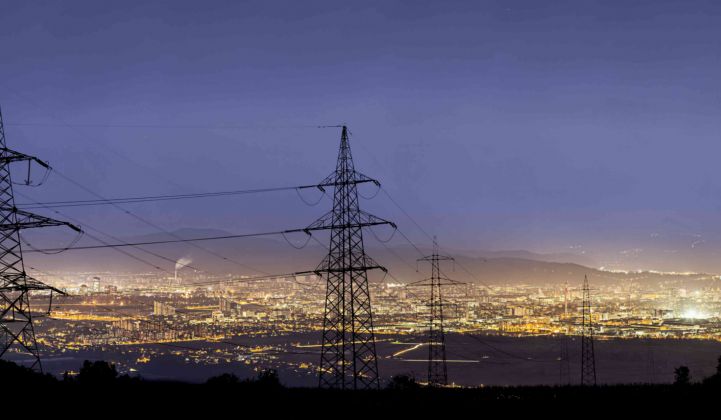Faraday Grid, the Scottish maker of a mystery transformer technology, has embarked on the spending spree it announced in January after raising $32.5 million. In the last week it has announced two acquisitions and opened innovation centers in the U.S. and Europe.
Both acquisitions were in the Czech Republic.
Faraday Grid has not named the companies involved, but according to local media they were an energy storage system cabinet maker called FITA Energy Solutions plus two subsidiaries of the Taiwanese manufacturing giant Foxconn.
One of them, Foxconn 4Tech, specializes in industrial internet of things (IOT) and smart manufacturing systems. The other, Foxconn DRC, was Foxconn’s design and research center in Prague.
Foxconn DRC was established in the Czech Republic in 2016, originally with a plan to create automation, telecommunications and electronics software and products for the automotive industry.
The value of the Faraday Grid transactions has not been disclosed and Foxconn has not commented on the sale of its Czech assets.
Faraday Grid’s acquisitions have been merged into a single innovation center with a team of roughly 100 experts spanning data science, artificial intelligence, IOT, software, power electronics, mechanical, electrical, control systems marketing and business development.
Backed by WeWork co-founder
The Prague innovation center is Faraday Grid’s third. The company already has a similar center in Edinburgh, U.K., and it opened a second one in Washington, D.C. last week with experts in power systems and electronics, as well as mechanical and electrical engineering.
In the U.S., Faraday Grid is based in offices owned by WeWork. WeWork’s co-founder, Adam Neumann, became a strategic investor in Faraday Grid with a GBP £25 million ($32.5 million) cash injection in January.
The Washington, D.C. innovation center launch was accompanied by the first public U.S. demonstration of Faraday Grid’s technology, the details of which have been tightly guarded by the company.
The firm’s main product, called an Exchanger, has been described as an autonomous hardware device or smart transformer that operates in isolation and independently of central network management, acting like an internet router that adjusts power flows instead of data traffic.
It is designed to replace existing electrical network infrastructure, such as converters, inverters, rectifiers and particularly transformers.
Many questions remain
Faraday Grid’s lack of transparency regarding the Exchanger has fueled speculation about the nature of the technology, with some observers drawing comparisons with a smart power flow controller concept developed by Sen Engineering Solutions of Pennsylvania.
In testing last year at the Glasgow, Scotland-based University of Strathclyde Power Networks Demonstration Centre, a Faraday Exchanger outperformed a traditional transformer in all of 16 tests, including under-voltage, over-voltage, dips, swells, harmonics, flicker and square waves.
In January, Andrew Scobie, Faraday Grid's CEO, told GTM that under certain conditions the product could help grids adjust to renewable energy penetrations of up to 90%.
Just as the details of its product have been kept under wraps, it remains unclear why Faraday Grid should need to open a global network of innovation centers to develop a product that has already been lab tested and is also being appraised by UK Power Networks in the U.K.
Scobie said the company would be looking to open another innovation center in Japan later this year and go on a further fundraising push with the aim of raising several hundred million dollars in June or July.
Rapid growth on the horizon
The company confirmed the capital raise, intended to allow Faraday Grid to achieve full commercialization and see it through to a market flotation within three years, was still in the cards.
Faraday Grid also said it was meeting regularly with potential project partners around the world but did not provide further details.
“Faraday Grid continues to grow rapidly and we are pleased to establish our first innovation center in mainland Europe,” said Scobie in a press release.
“Our new colleagues in the Czech Republic have a wealth of expertise and knowledge in new areas, while sharing our goal of bringing clean, affordable and reliable energy to everyone,” he said.
“Our teams are fully aligned from a strategic and cultural perspective, and I’m looking forward to ramping up the capabilities and services that a larger Faraday Grid can provide.”
--
Join us in San Diego, June 18-19, for two full days of data-intensive presentations from the leading grid edge research practice in America and industry-led discussions on how data analytics, AI, DERMs and other smart grid innovations are enhancing grid reliability, optimization and planning. Learn more about Grid Edge Innovation Summit here.




